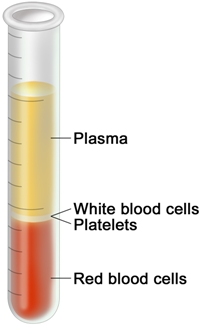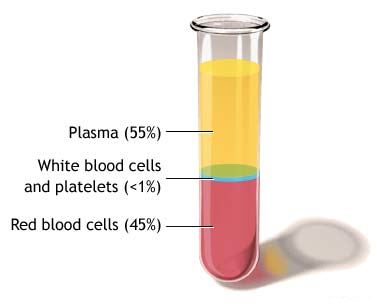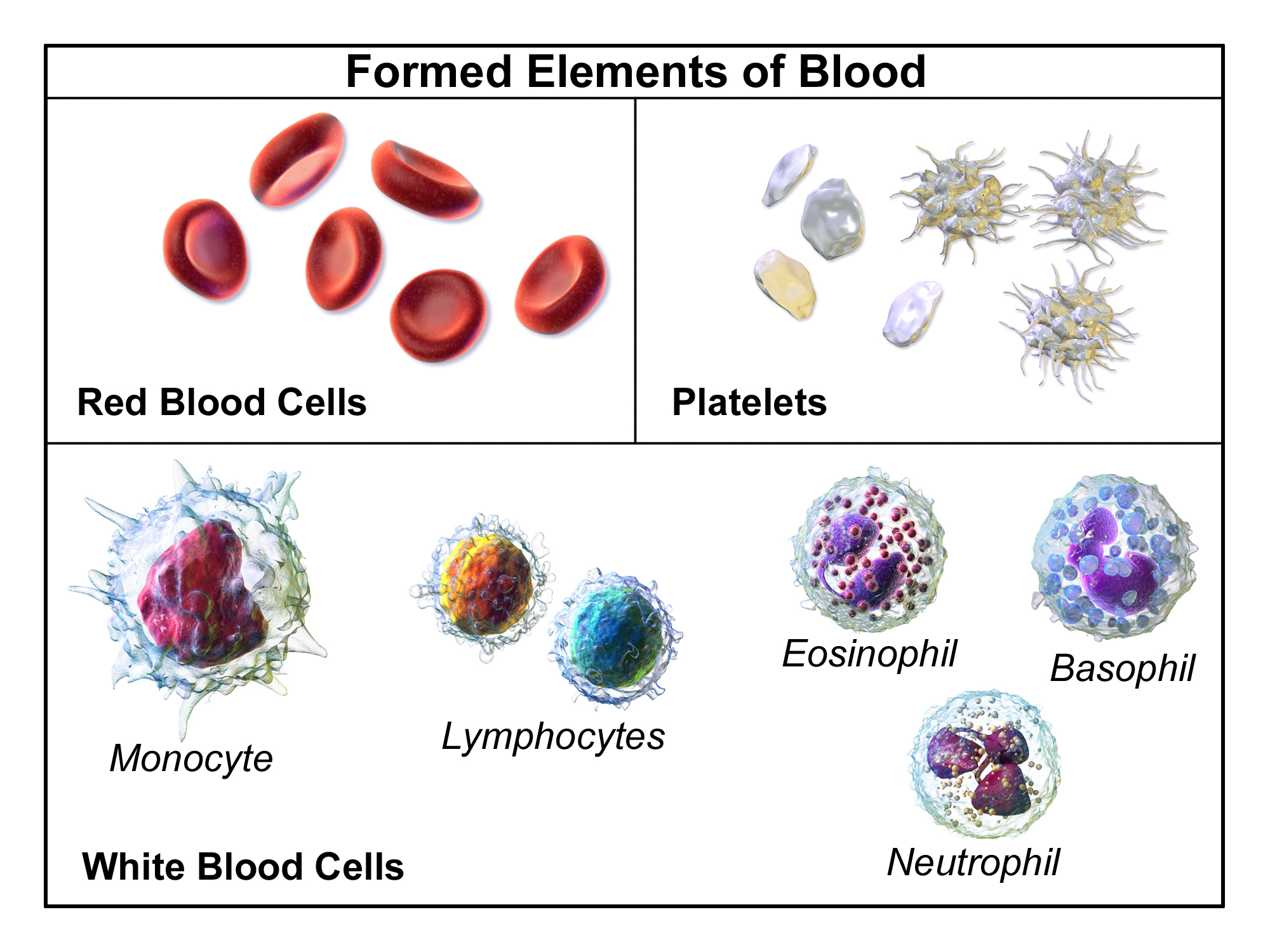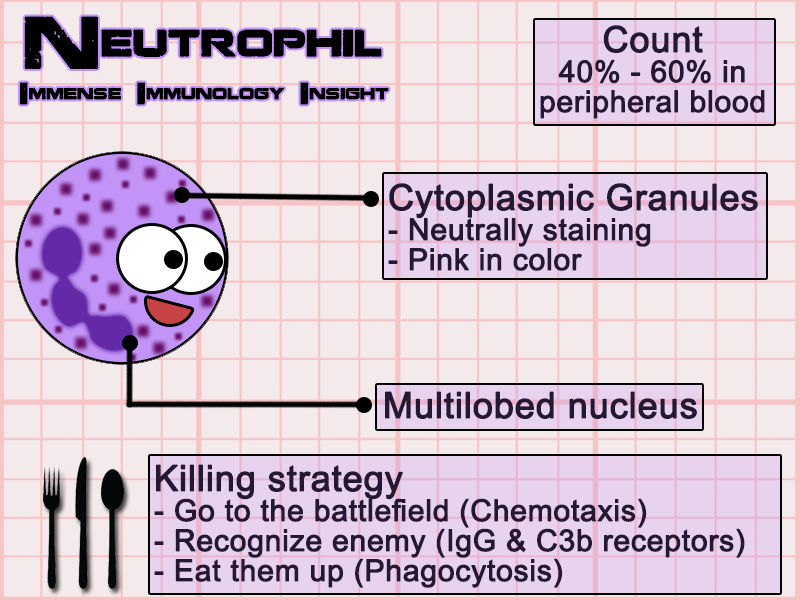Cardiovascular System consists of......
-a pump (heart)
-a conducting system (blood vessels)
-a fluid medium (blood)
Blood

-a specialized fluid of connective tissue that contains cells suspended in a fluid matrix
Important functions of blood...
-Transportation of dissolved substances
-Regulation of pH and ions
-Restriction of fluid losses at injury sites
-Defense against toxins and pathogens
-Stabilization of body temperature
Whole Blood

-combination of plasma and formed elements
Plasma

fluid matrix of blood consisting of:
1.water
2.dissolved plasma proteins
3.other solutes
Formed Elements

-blood cells and cell fragments that are suspended in plasma
Three Types of Formed Elements

-red blood cells/erythrocytes
-white blood cells/leukocytes
-platelets/thrombocytes
Red Blood Cells/Erythrocytes

-transport oxygen from lungs to tissues and carbon dioxide from tissues to lungs)
-make up 99.9% of blood's formed elements
-small and highly specialized discs
-thin in middle and thicker at edge
-lack nuclei, mitochondria, and ribosomes (means no repair and anaerobic metabolism)
-lives for about 120 days
White Blood Cells/Leukocytes

-part of the immune system
-ex: neutrophils, eosinophils, basophils, lymphocytes, and monocytes
-does not have hemoglobin
-have nuclei and other organelles
Platelets/Thrombocytes

-cell fragments involved in clotting
Hemopoiesis
-process of producing formed elements by myeloid and lymphoid stem cells
Fractionation

-process of separating whole blood for clinical analysis
General Characteristics of Blood
1. 38 degrees C (100.4 degress F) is normal temperature, slightly above normal body temperature
2.High Viscosity
3.SLightly alkaline pH (7.35-7.45)
4.Blood volume (liters)= 7% of body weight (adult male 5-6 liters; female 4-5 liters)
The Composition of Plasma

-makes up 50-60% of blood volume
-more than 90% of plasma is water
Plasma Proteins
-Albumins (60%)
-Globulins (35%)
-Fibrinogen (4%)
Albumins
-makes up 60% of the plasma proteins
-transports nutrients such as fatty acids, thyroid hormones, and steroid hormones
Three Important Effects of RBC Shape on FUnction
-high surface to volume ratio (quickly absorbs and releases oxygen)
-discs form stacks called rouleax (smooth the flow through narrow blood vessels)
-discs bend and flex entering small capillaries
Globulins
--makes up 35% of the plasma proteins
-antibodies, also called immunoglobulins
-transport globulins (small molecules): hormone-binding proteins, metalloproteins, apolipoprotein (lipoproteins), and steroid-binding proteins
Fibrinogen
-makes up only 4% of plasma proteins
-molecules that form clots and produce long, insoluble strands of fibrin
Serum
-liquid part of a blood sample, in which dissolved fibrinogen has converted to solid fibrin
Other Plasma Proteins
-1% of plasma proteins
-changing quantities of specialized plasma proteins
Origins of Plasma Proteins
-more than 90% is made in the liver
-antibodies made by plasma cells
-peptide hormones made by endocrine organs
Hemoglobin
-the red pigment that gives whole blood its color
-binds and transports oxygen and carbon dioxide
-complex quaternary structure
Fetal Hemoglobin
-strong form of hemoglobin found in embryos
-takes oxygen from mothers hemoglobin
Erythropoiesis

-red blood cell formation, occurs only in myeloid tissue (red bone marrow) in adults
-stem cells mature to become RBCs
Stages of RBC Maturation

1.Myeloid stem cell
2.Proerythroblast
3.Erythroblasts
4.Reticulocyte
5.Mature RBC
RBC Formation and Turnover
-1% of circulating RBCs are replaced each day
-3 million new RBCs enter the bloodstream each second
Hemoglobin Conversion and Recycling
-macrophages of liver, spleen, and bone marrow play a role in recycling RBC components
-each heme unit is stripped of its iron and converted to biliverdin
Biliverdin
-an organic compound with a green color
Breakdown of Biliverdin
-biliverdin is converted to bilirubin
Iron Recycling
-iron removed from heme leaving biliverdin
Hemocytoblasts
-stem cells in myeloid tissue divide to produce:
(1) Myeloid stem cells, which become RBCs and some WBCs
(2) Lymphoid stem cells, become lymphocytes
Regulation of Erythropoiesis
-building red blood cells requires:
(1) Amino Acids
(2) Iron
(3) Vitamins - B12, B6, and folic acid
Pernicious Anemia
-Vitamin B12 deficiency
-Low RBC production
Erythropoietin (Erythropoiesis-stimulating hormone)
-secreted when oxygen in peripheral tissues is low (hypoxia)
Hematocrit (Hct)
-percentage of formed elements in whole blood
-normal hematocrit 37-54%%
Reticulocyte Count
-percentage of circulating reticulocytes
-normal reticulocyte count 0.8%
Hemoglobin Concentration
-concentration of hemoglobin in blood
-normal 12-18 g/dl
Surface Antigens
-surface proteins that identify cells to immune system
-normal cells are ignored and foreign cells are attacked
Blood Types
-genetically determined, by presence or absence of RBC surface antigens A, B, or RH
Four Blood Types

A, B, AB, O
Type A (blood type)

surface antigen A
*anti-B antibodies will attack type B surface antigens
Type B (blood type)

surface antigen B
*anti-A antibodies will attack type A surface antigens
Type AB (blood type)

antigens A and B
*has neither anti-A or anti-B antibodies
Type O (blood type)

-has neither A or B antigens
Agglutinogens

-antigens on surface of RBCs
-screened by immune system
Cross-Reactions in Transfusions
-plasma antibody meets its specific surface antigen, blood will clump and hemolyze
-occurs if donor and recipient blood types are not compatible
WBC Functions
-defend against pathogens
-remove toxins and wastes
-attack abnormal cells
Granulocytes

-cells with abundant stained granules
*neutrophils
*eosinophils
*basophils
Aggranulocytes

-few if any stained granules
*monocytes
*lymphocytes
Neutrophils

makes up 50-70% of circulating WBC
-nucleus can have 2 to 5 lobes (resembling beads on a string)
-cytoplasm is packed with pale granules containing lysosomal enzymes and bactericidal compounds
-very to attack bacteria